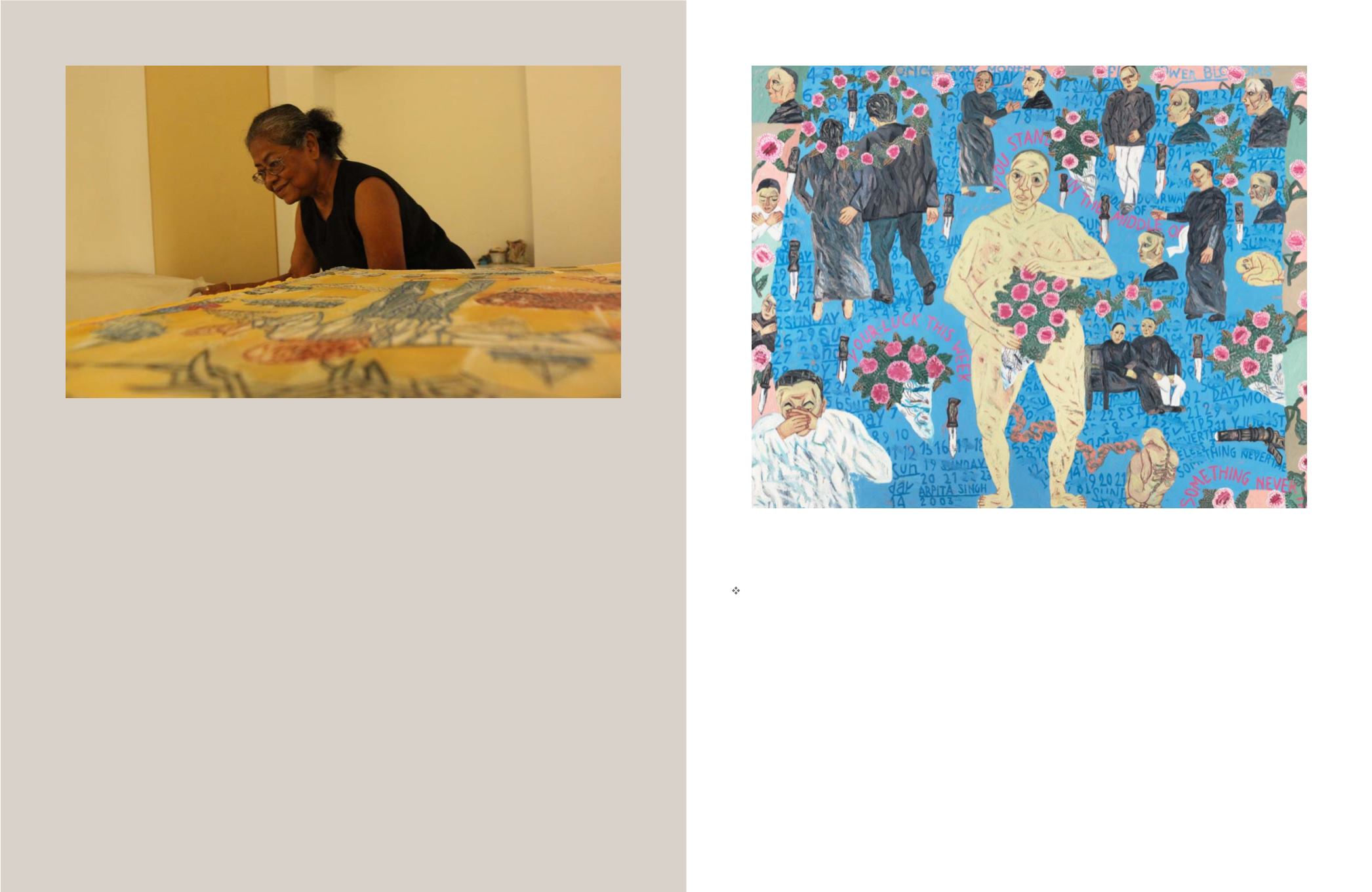

80
81
54
ARPITA SINGH
(b. 1937)
Summer Months
Signed and dated 'ARPITA SINGH 2003' (lower centre)
2003
Oil on canvas
47.25 x 59.5 in (120 x 151 cm)
$ 180,000 - 240,000
Rs 1,15,20,000 - 1,53,60,000
PROVENANCE:
Private East Coast Collection
Saffronart, 19‒20 September 2012, lot 41
Private Collection, Florida
EXHIBITED:
New Narratives: Contemporary Art from India
, Illinois: Chicago
Cultural Center, 21 July ‒ 23 September 2007; Kansas: Salina
Art Center, 5 January ‒ 16 March 2008; New Brunswick: Jane
Voorhees Zimmerli Art Museum, 12 April ‒ 31 July 2008
Memory Jars
, New York: Bose Pacia, 2003
PUBLISHED:
Betty Seid, Johan Pijnappel eds.,
New Narratives:
Contemporary Art from India
, Ahmedabad: Mapin Publishing,
2007, p. 42 (illustrated)
I
n
Summer Months
, Arpita Singh gives centre‒stage
to an ageing woman who reflects on the vagaries
of time and the uncertainties of the future. The
vulnerable, nude figure is surrounded by funerary images
of aged men and women. An atmosphere of mourning
pervades these figures. But amid this sadness are also
objects and scenes of stark violence. Daggers rain down
on the scene; viscera spill out of a body in the corner,
and a gun is seen in the lower right, pointed toward the
fallen body. Singh incorporates fragments of a calendar
and phrases on the blue background.
Summer Months
was first exhibited at Bose Pacia
Modern, New York in 2003. The shift to a larger format
during this period allowed Singh to play out her
narratives in more detail. Critics observed that the role of
the ageing woman becomes the dominant motif in her
work from the early 2000s. In the exhibition catalogue
for the show, artist Nilima Sheikh writes, “Arpita paints
the ageing woman – as icon, as protagonist, baring the
voluminous post‒menopausal sexuality of her body, as
cavernous as it is vulnerable.” (“Of target‒flowers, spinal
cords, and (un)veilings,”
Memory Jars
, New York: Bose
Pacia Modern, 2003) Ella Datta echoes this, noting that
“the ageing female body emerged as one of the telling
metaphors of the poignancy of the passage of time.”
(
Cobweb
,
New Delhi: Vadehra Art Gallery, 2010, p. 9)
The exhibition praised Singh, highlighting her as a
leading contemporary Indian artist. According to critic
Holland Cotter, “The psychological and the political
merge in paintings by New Delhi artist Arpita Singh.
So do everyday life and allegory, expressionism and
ornament, historical sources from Bengal folk painting
to Marc Chagall, and a formal approach that is at once
unassuming and hard‒worked, gauche and poised.”
(Holland Cotter, “Art in Review; Arpita Singh,”
The New
York Times
, 3 October 2003)
Arptia Singh
© Manisha Gera Baswani


















